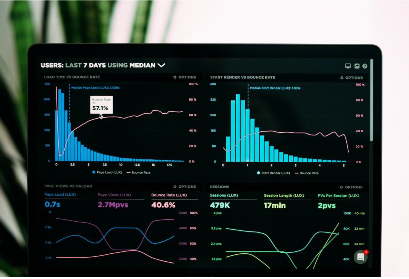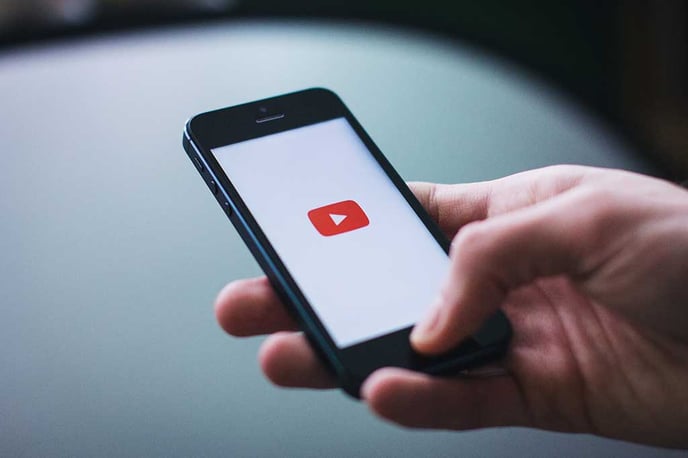A Guide to Video Marketing
- Home
- A Guide to Video Marketing
Video marketing is a powerful business strategy. Learn how you can maximise it and take advantage of its strong potential to keep you competitive in the digital arena.

Cisco estimates that videos will encompass 82% of all internet traffic by 2020. Being able to blend videos into your marketing strategy is mission-critical for any business that wants to stay competitive in the digital space.
But, video marketing is more than throwing a branded video up on an ad platform. Successful video marketing requires some finesse, and you have to understand the nuances baked into each video platform.
Are you ready to reach users at scale and grow meaningful, brand-driven connections that reach beyond the content?
Let's dive in!
What is Video Marketing?
Video marketing can brand, engage, convert, provoke emotions, and attract customers across multiple channels using a variety of strategies. The power of video marketing is vast, and you can apply it to processes at every stage in the buyer's journey.
Here's the great thing about video marketing. It comes in a variety of forms. Whether you're using video marketing to increase viewers for those corporate webinars, or you're using it to grab leads through ad platforms, video marketing is powerful.
Want to attach a video to your emails? Great! Do it! It can boost leads by 300%!
Thinking of shoving a video on your landing page? Try it out! A single video can lead to 80% higher conversion rates.
Really, if you press the record button with the intention of branding, converting, informing, or engaging, you're video marketing.
The Benefits of Video Marketing
Why should you use video marketing? Is it really that powerful? Yes!
There are bunches of benefits to video marketing, and a solid video marketing campaign can help you achieve multiple objectives ranging from ranking to conversions.

In fact, let's go over a few of the benefits of video marketing to really cement the point.
SEO
Did you know that videos can increase organic traffic from SERP by 157%? Modern Google is complicated. Since infographics and blog posts are so good at boosting SERP rankings, lots of businesses simply ignore videos. That's a bad idea!
Here are two reasons you should think about incorporating videos into your SEO strategy.
- They're great at link-building. While it can be easy to get lost in the digital noise, successful videos (we'll talk about how to make these in the next section) can act as link juice magnets. You don't have to go "viral" to collect all of that sweet juice either. If you make videos that are naturally engaging, people are going to link to them: the more quality links, the better you're going to rank.
- Increased conversions. Videos can boost conversions by 80%! Sure, that's more money in your pocket. But, what does that have to do with SEO? Well, all of those brand-new customers are going to be consuming more of your content. That means more views, more links, and more engagement. That's a win-win-win.
Trust
This is for the marketing pirates out there. Trust is the nugget of gold at the heart of the customer experience. Like all gold, it's heavily guarded. Video helps you penetrate those barriers (i.e., distrust, uninterested, etc.).
How?
Video creates conversation and authenticity. By leveraging storytelling and brand, your videos can lead customers straight to your doorstep. In fact, 64% of users make a purchase after watching a branded video.
Traffic
Looking for a traffic booster shot? Try video marketing. 85% of every U.S. internet user watches videos online. They aren't just watching a few either. Half a BILLION users are watching Facebook videos daily. And, 92% of mobile users share those videos with each other.
There's traffic in videos.
Lead Generation
What good is a marketing strategy without lead generation? Luckily, video marketing can score leads — lots of leads. In fact, 51% of marketers think video marketing has the single highest ROI of any marketing strategy.
Also, websites with video have 2% higher conversion rates on average!
Engagement
When it comes to engagement, videos know how to get people talking. Social videos get shared 12x more than images or text, and people spend 88% more time on sites with videos.
The Buyer's Journey and Video Marketing
If you've never used videos as part of your marketing strategy, starting can be daunting. What kinds of videos do you make? What works for your audience? How do you use your videos to capture leads and engage users?

The answer lies at the heart of the buyer's journey. One of the best ways to "dip your feet in the waters" of video marketing, is to create videos for each stage of the buyer's journey.
What does that look like?
Stage 1: Awareness (Top of the Funnel)
During the awareness stage, you want to be leveraging videos that add value. Remember, people in this part of the funnel are searching for an answer to their problem. They don't want a bunch of sales material. Save that for later stages. It's crucial that your videos are fun, engaging, and informative in this phase.
What kinds of videos work in the awareness stage?
- FAQs videos
- How-to-videos
- Inspirational videos
- Fun branded videos
Remember, you want to be having fun and providing entertainment at this phase. So, even your branded videos need to be topical.
Stage 2: Consideration (Middle of the Funnel)
During the consideration stage, you want to be leveraging videos that help explain benefits to customers. They already know that they need a service like yours — they just aren't sure if it's you or your competitors.
What kinds of videos work in the consideration stage?
-
Explainer videos (97% of businesses think explainers help their customers understand their products better)
-
Product guides (73% of customers would rather learn about a product via video)
-
Comparison videos (People retain 95% of the information in a video; they only retain 10% with text!)
Try to tell prospects why your company is the best around by introducing deep storytelling threads and consistent branding.
Stage 3: Decision Stage (Bottom of the Funnel)
During the decision stage, you want to leverage videos that pack a punch. Customers in this stage are about to pull the trigger — they just have some last second nerves.
What kinds of videos work in the decision stage?
- Testimonials
- Behind-the-scenes
- Live videos
- Demos
Prove to them how great your product is using video. Take those last-second nerves and smash them with your brand hammer.
How to Create Killer Videos
What good is a video marketing guide without some actionable strategies? Now that we know what video marketing is, its benefits, and how it relates to the buyer's journey, let's talk shop. How do you actually create a killer video?

Successful video marketing is comprised of five buckets.
1. Measurability
2. Storytelling
3. Branding
4. Entertainment
5. Customer-Centricity
Measurability
The ability to capture metrics is crucial for any marketing campaign. So, it's natural that successful videos require keen attention to analytics. What works? What doesn't work? You need to know!
There are plenty of different KPIs you can use to measure video success.
Let's separate the most valuable ones by the buyer's journey.
1. Attract: During this phase, you want: views, unique users, rate of play, and impressions. It's all about reach.
2. Consideration: During this phase, you want: watch time, CTR, and brand interest lifts. You want to make sure users are engaged at this stage.
3. Decision: During this phase, you want: conversions, clicks, sign-ups, sales, etc. Use your main sales metrics.
HubSpot can be a massive help during this phase. You can integrate most videos with HubSpot analytics, which makes measuring pain-free.
Storytelling
Here's a question. Why do you watch TV? Why do you watch movies? The story! Good video marketing requires storytelling abilities.
If you don't know how to tell a story, you're in luck.
Here are the main elements of a good brand story.
1. Pick your story and make sure that it's relevant to your target audience.
2. Make sure your story is accessible to a broad range of users.
3. Introduce your characters or point rapidly.
4. Introduce conflict of some kind. What's the problem? How is your product/service the solution?
5. Resolve the problem using your solution.
Branding
You can make the best video of all time. If you forget to brand it, the entire project was a failure. Branding is the diamond at the heart of video marketing. 54% of users want to see branded videos as their primary avenue of branded content!
This means incorporating your tone, voice, and structure into your video. Each element of your video should scream, well, you. A crucial part of branding is understanding where to shove your video. We'll talk about this in the next section. But, just remember that 80% of Gen Z watches branded videos on YouTube and Facebook, while 40% of Millennials watch them on your website. So, you need to have a broad strategy.
Entertainment
This is probably the most obvious bucket. Your video needs to be entertaining. This can mean different things for different brands. For some brands, the quirky, new-age comedy style works well (see Dollar Shave Club).
For other brands, hyper-informative and thoughtful works well (see Tech Insider).
Sometimes, your product is so interesting that a simple explainer can go viral (see Phoneblocks).
It all depends on your brand. The main point is to find a way to make it digestible and fun.
Customer-Centricity
Centre your videos on your customer's pain points. Don't just brag! You want your customers to associate your brand with value. We see this mistake all the time. Your brand has a great product, so you make a video bragging about your features.
Here's the problem. No one wants to watch that. Your videos should be relevant to your viewers, not you.
Understanding the Primary Video Ad Platforms
Knowing how to make a video is just the start. Knowing where to put it is the cherry-on-top. Each video platform is a different living, breathing ecosystem of users. That means that your strategy for each video platform should be different. What works on YouTube may not work on Facebook — vice versa.
So, what are the best video hosts? Where should you stick your videos?
Let's go over some pros and cons of the main video hosts and platforms.
YouTube MARKETING
YouTube is YouTube a video goliath. Not only is YouTube the second most popular website in the world (behind Google,) but people view over 1 billion hours of YouTube videos every day.

But, penetrating the YouTube video marketing space can be difficult. With 300 hours of video uploaded to YouTube every single minute, climbing to the top of the mountain can seem impossible. Luckily, with a little finesse, you can reach viewers and engage them on a deep level.
Here are a few tips:
-
Make sure your title is catchy! Try to draw users in with a title that sparks emotions or draws on a sense of urgency. Like your blog titles, you should do a little keyword research first.
-
Have a great thumbnail. Make sure it's relevant and attention-grabbing. Remember, your thumbnail is what draws them to the video. It's the first thing they'll see, and it's how they'll immediately judge your video. People form an opinion in 1/10th of a second.
-
Optimise your video's tags. Again, keyword research comes in handy here. Pick relevant tags with heavy traffic.
-
Analyse your videos. You want to measure your videos to keep up-to-date on all your metrics. You can plug YouTube into your HubSpot account for analytic integration. It's easy, and it gives you all the KPIs you'll need.
Of course, YouTube is also the premier ad spot. You can create ads using Google AdWords, so it's super simple to set up.
If you're going to use ads, remember these two things.
-
Brand in the first 5 seconds. Most people are going to skip your ads.
-
Try to remove unsuitable users in the first 5 seconds. You have to pay if people watch more than 5 seconds. Don't let people outside of your target audience squeak in and milk your wallet.
YouTube Pros
-
Rich in users
-
Integrates with HubSpot
-
You can use Google AdWords to create hyper-targeted ads
-
The highest chance of going "viral"
YouTube Cons
-
65% of users skip YouTube ads
-
Hard to reach trending in such a saturated market.
Second to YouTube, Facebook is one of the primary sources that people use to watch videos. In fact, there are over 8 billion views daily on Facebook.

Here's the main trick to Facebook. You need to rely on visuals. 85% of Facebook users watch videos with the sound off. To combat this, try captioning your video — it increases view time by 12%.
We know what you're thinking. Why not just force sound on? Don't do that! 80% of users get a negative impression of your brand when you force sound on. Let users pick whether or not to use sound.
Since most won't, you should definitely be shooting in 4k and leveraging rich visuals. Remember to make them mobile-friendly. There are 5x as many Facebook users watching videos on their phone than anywhere else.
Facebook also has deep HubSpot integrations for analytics so you can keep track of your campaigns and videos.
Facebook Pros
-
Great way to score leads and boost your organic channels
-
Tons of users
-
Easy to set up targeted ads
-
Great HubSpot integration
Facebook Cons
-
Doesn't auto-play sound
-
Not as many users as YouTube
Vimeo
Why should you use Vimeo? After all, YouTube has WAY more users. It seems strange to use anything else, right? Maybe. Or, maybe not.
Vimeo has two main draws.
-
It's extremely community-driven. Vimeo may have fewer viewers, but it does have engaged viewers. Also, the platform isn't totally pay-to-win or view based. The staff hand-picks videos for their "staff picks" pages. That means you can penetrate the front page without having a billion views.
-
There aren't any pre-roll ads. Nothing is worse than trying to create a video and seeing your competitor pop-up before viewers can see your video. Vimeo doesn't allow pre-roll ads. This gives it an advantage for organic campaigns.
But, beyond those draws, Vimeo is usually a weaker option than YouTube for businesses. Some brands have found success on Vimeo. But, as a whole, it's usually second-choice to YouTube.
Vimeo Pros
-
Community-driven environment
-
No pre-roll ads
Vimeo Cons
-
Not as many users as YouTube
-
Harder to use for SERP
-
Vimeo costs money
-
No HubSpot integration
Brightcove
While YouTube, Facebook, and Vimeo are all video hosting platforms that act as portals for users, Brightcove is simply a host and video optimiser. In other words, you can use Brightcove to push videos to social channels or for your website.
One of the best things about Brightcove is that it has rich analytics glued to its frameworks. You can rapidly integrate these analytics straight into your HubSpot account, which is always great. Who wants to use two dashboards instead of one? No one!
Brightcove has a ton of baked-in features, like:
-
Flexible HTML 5 players
-
Smart, robust ad insertions
-
Amazing live video capabilities
-
and plenty more.
Brightcove Pros
-
Flexible marketing tools
-
Speedy HTML component
-
Easy-to-use
-
TONS of analytics + HubSpot integrations
-
Great live platform
-
Over-the-top video marketing and engagement
Brightcove Cons
-
Costly ($199/mo)
TwentyThree
Like Brightcove, TwentyThree is a hosting and optimising tool for video marketers. One of the main draws of TwentyThree is that it lets you easily host the videos on your own site without worrying about optimisation or load issues.
Again, like Brightcove, TwentyThree lets you push users to social media. Unlike Brightcove, TwentyThree enables you to design landing pages for your videos, which is great. One of the central value props of TwentyThree is its webinar tools, which make hosting webinars a breeze.
Guess what? TwentyThree also has HubSpot integrations for analytics. Sweet!
TwentyThree Pros
-
Great for webinars
-
HubSpot integrations
-
Powerful analytics
-
Customer landing page design tool
TwentyThree Cons
-
Very costly ($199/mo for webinar tool, $699 for videos and webinars, and $2,500 for enterprise)
Vidyard
When it comes to marketing prowess, Vidyard is a nuclear weapon. With rich SEO capabilities, A/B testing support, tons of personalisation features, and crazy-powerful analytics, Vidyard packs a punch.
One of the main problems with Vidyard is the price. They're enterprise only. We're talking $1,500/mo for the cheapest package. But, you get what you pay for.
Vidyard also has HubSpot integrations.
Vidyard Pros
-
Embeddable and formattable across device types
-
A/B testing is great
-
Extremely powerful analytics
-
Quick personalisation
-
Easy-to-use and scale
Vidyard Cons
-
High cost (£1,500/mo starting)
Conclusion
We hope this guide helped you understand some basics of video marketing. By incorporating video marketing into your buyer's journey, you can growth-hack your campaigns and grab organic traffic. Just make sure that your videos are measurable, branded, entertaining, customer-centric, and that these videos tell a story.
So, get out there, pick your host and platform, and put out some killer videos. What are you waiting for?
